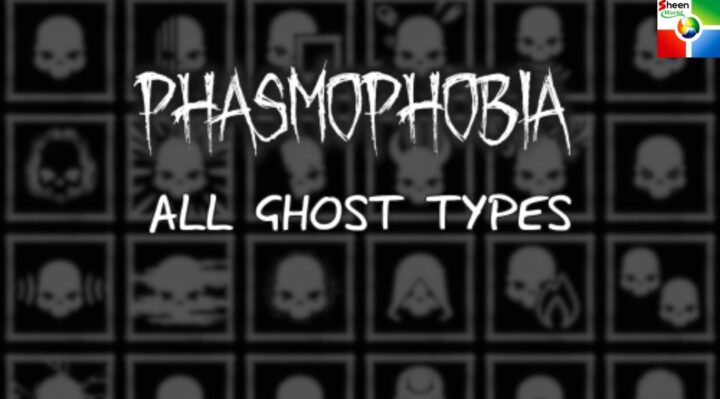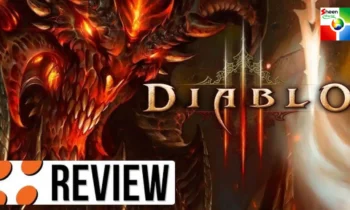
Phasmophobia has captured the hearts of gamers with its unique blend of horror and cooperative gameplay. Central to the game’s experience is the variety of ghost types players encounter during their ghost-hunting missions. Understanding these Phasmophobia ghost types is crucial for players aiming to successfully identify and deal with the supernatural entities lurking in haunted locations. In this comprehensive guide, we will explore each ghost type, their characteristics, behaviors, and strategies for dealing with them.
H1: Overview of Ghost Types in Phasmophobia
H2: The Importance of Ghost Types
In Phasmophobia, players are tasked with identifying the types of ghosts that haunt various locations. Each ghost type has unique traits, abilities, and evidence associated with it. Understanding these differences not only enhances gameplay but also improves your chances of survival and successful mission completion.
H3: Ghost Classification
Ghosts in Phasmophobia are classified into several categories based on their behaviors and the evidence they leave behind. Players must gather clues to determine which ghost they are dealing with, leading to a more strategic approach to the game.
H4: Evidence Gathering
Key pieces of evidence include:
- EMF Level 5: Indicates strong paranormal activity.
- Spirit Box Responses: Ghostly communication through a device.
- Fingerprints: Marks left on surfaces.
- Ghost Orbs: Visible in certain locations.
- Writing in the Ghost Book: Messages left by the ghost.
H1: Detailed Breakdown of Each Ghost Type
H2: Spirit
H3: Overview
Spirits are the most common ghost type in Phasmophobia. They are often considered the most straightforward to deal with.
H4: Characteristics
- Evidence: EMF Level 5, Spirit Box, Ghost Writing.
- Behavior: Spirits tend to be passive but can become aggressive if provoked.
- Weakness: Can be temporarily warded off with salt.
H2: Wraith
H3: Overview
Wraiths are known for their ability to fly and their tendency to avoid physical contact with humans.
H4: Characteristics
- Evidence: EMF Level 5, Spirit Box, Fingerprints.
- Behavior: Wraiths can teleport and are less likely to leave footprints.
- Weakness: Can be repelled using the Crucifix.
H2: Phantom
H3: Overview
Phantoms are elusive and can cause significant psychological effects on players.
H4: Characteristics
- Evidence: EMF Level 5, Spirit Box, Ghost Orbs.
- Behavior: When a player looks at a Phantom, it can become invisible.
- Weakness: Taking a photo of a Phantom will make it disappear temporarily.
H2: Poltergeist
H3: Overview
Poltergeists are known for their ability to manipulate objects and create disturbances in their environment.
H4: Characteristics
- Evidence: EMF Level 5, Spirit Box, Fingerprints.
- Behavior: They can throw objects and create chaos in a room.
- Weakness: They are less active in areas with no clutter.
H2: Banshee
H3: Overview
Banshees are unique in that they focus on a specific target, making them particularly dangerous.
H4: Characteristics
- Evidence: EMF Level 5, Spirit Box, Fingerprints.
- Behavior: Banshees will hunt their chosen target relentlessly.
- Weakness: Can be deterred by using a Crucifix.
H2: Revenant
H3: Overview
Revenants are fast and deadly, especially when they are aware of a player’s location.
H4: Characteristics
- Evidence: EMF Level 5, Ghost Writing, Spirit Box.
- Behavior: They are much faster when chasing a player.
- Weakness: Hiding or using obstacles can slow them down.
H2: Shade
H3: Overview
Shades are elusive and prefer to stay in the shadows, making them difficult to detect.
H4: Characteristics
- Evidence: EMF Level 5, Ghost Writing, Spirit Box.
- Behavior: Shades are less likely to attack when there are multiple players nearby.
- Weakness: Can be deterred by staying in groups.
H2: Demon
H3: Overview
Demons are among the most dangerous ghost types, known for their aggressive behavior.
H4: Characteristics
- Evidence: EMF Level 5, Ghost Writing, Spirit Box.
- Behavior: They can attack without provocation and are known for their ferocity.
- Weakness: Can be temporarily warded off with the Crucifix.
H2: Yurei
H3: Overview
Yureis are spirits that are often tied to their place of death and can be particularly vengeful.
H4: Characteristics
- Evidence: EMF Level 5, Ghost Writing, Ghost Orbs.
- Behavior: They can cause significant fear and drain players’ sanity.
- Weakness: Can be deterred by burning a Yurei’s body with a fire.
H2: Oni
H3: Overview
Onis are powerful and aggressive ghosts that can be unpredictable.
H4: Characteristics
- Evidence: EMF Level 5, Ghost Writing, Spirit Box.
- Behavior: Onis are more active when there are multiple players.
- Weakness: Can be warded off with the Crucifix.
H1: Strategies for Identifying Ghost Types
H2: Gathering Evidence
Effective evidence gathering is crucial for accurately identifying ghost types. Players should use tools like EMF readers, spirit boxes, and cameras strategically.
H3: Team Communication
Communication among team members is essential. Sharing findings and observations can lead to quicker identification of ghost types.
H4: Managing Sanity
Players must manage their sanity levels, as lower sanity increases the likelihood of ghost attacks. Using sanity pills can help mitigate this risk.
H1: Conclusion
Understanding the various Phasmophobia ghost types is key to surviving the game and completing investigations successfully. Each ghost type presents unique challenges and requires different strategies for identification and engagement. By familiarizing yourself with their characteristics, behaviors, and weaknesses, you can enhance your gameplay experience and improve your chances of survival. So gather your friends, equip your gear, and dive into the haunting world of Phasmophobia!
This detailed guide explores the various Phasmophobia ghost types, their characteristics, and strategies for dealing with them. Whether you’re a newcomer or a seasoned ghost hunter, understanding these elements will enhance your gameplay experience.



